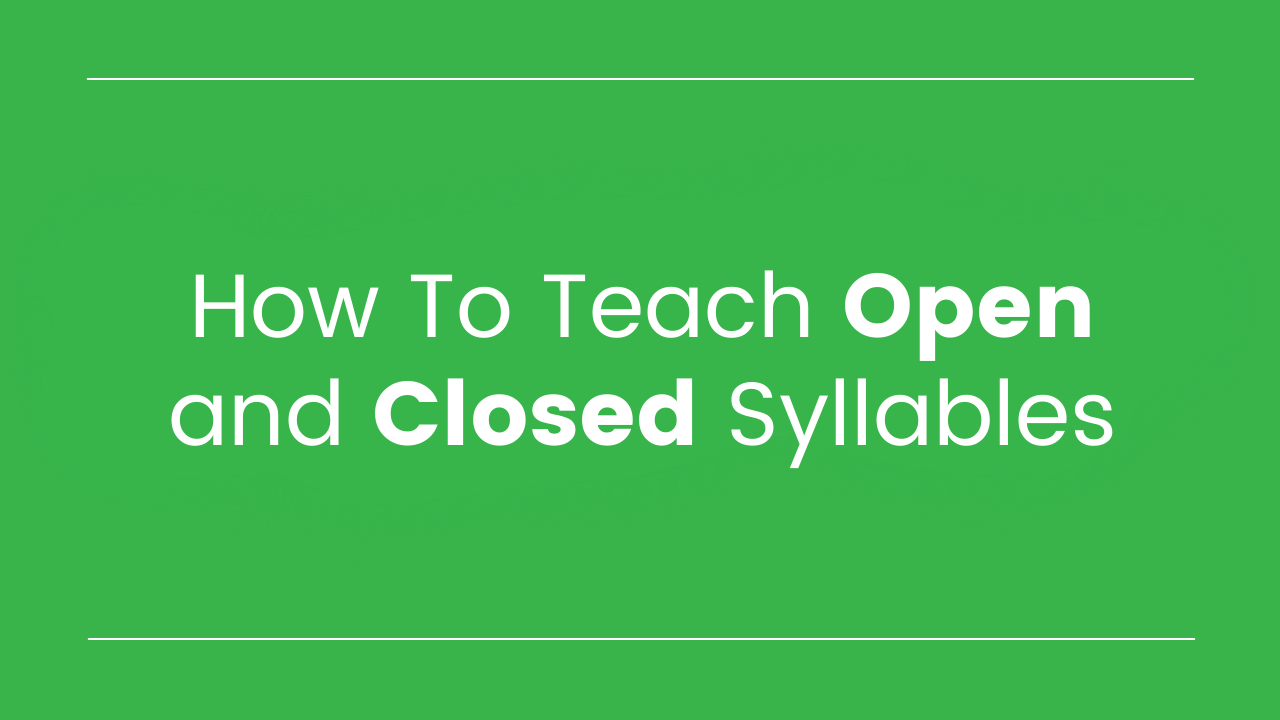
How To Teach Open and Closed Syllables
Many English words are made up of multiple syllables. However, many reading and phonics programs focus exclusively on 1-syllable words. The problem with this is that when kids begin to encounter multisyllabic words (often as early as 1st grade), they often don't know how to read them!
Explicit instruction on how to break up words into individual syllables can help kids learn to manage these longer words. A child can tackle just one syllable at a time! For example, instead of looking at the word "sunset" as a whole, they can decode "sun," then "set," and then put the parts together to read the entire word. This feels less overwhelming and also tends to help kids read multisyllabic words more accurately.
In addition to knowing how to break up multisyllabic words, it's also helpful for students to have an understanding of open and closed syllables. This knowledge can help them figure out the vowel sound in a syllable.
What Are Closed Syllables?
A closed syllable ends in a consonant sound and typically has a short vowel sound. The word "hat" is made up of one closed syllable. The word "bathtub" is made up of two closed syllables ("bath" and "tub").
What Are Open Syllables?
An open syllable ends with a vowel - it is not "closed in" by a consonant. You might tell students that the vowel is free to "shout its name," meaning that it represents a long vowel sound. The word "go" is a 1-syllable word made up of an open syllable. "Hero" is made up of two open syllables, "he" and "ro." Notice how all the vowels in these open syllables represent long vowel sounds.
How Does Knowing Open and Closed Syllables Help With Reading Vowel Sounds?
If a child sees that a syllable ends with a vowel, they can try the long vowel sound for that vowel. If a child sees a closed syllable (and there isn't a vowel team or diphthong), they can try a short sound for that vowel. Although there are always exceptions, the open and closed syllable "rules" can help distinguish between short and long vowels in many words.
How To Teach These Concepts
After students can read CVC words relatively fluently, you can begin working on 2-syllable words like "sunset" - since they are made up of 2 CVC words. It's usually easiest to have students practice only with closed syllables.
However, when you start teaching the long vowel sounds, it can make sense to introduce open syllables. To see how to introduce this concept, check out the video below:
If you're looking for a comprehensive phonics program that includes instruction on multisyllabic words (open syllables, closed syllables, and much more), check out From Sounds to Spelling (R). You can even download a free week of the program here!




